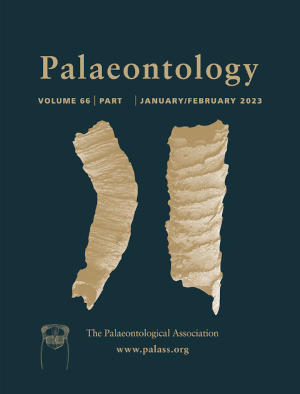Article: Cranial endocast of Anagale gobiensis (Anagalidae) and its implications for early brain evolution in Euarchontoglires
Publication: Palaeontology
Volume:
66
Part:
3
Publication Date:
2023
Article number:
e12650
Author(s):
Sergi Lopez-Torres, Ornella C. Bertrand, Madlen M. Lang, Lucja Fostowicz-Frelik, Mary T. Silcox, and Jin Meng
Abstract
Abstract Anagalids are an extinct group of primitive mammals from the Asian Palaeogene thought to be possible basal members of Glires. Anagalid material is rare, with only a handful of crania known. Here we describe the first virtual endocast of an anagalid, based on the holotype of Anagale gobiensis (AMNH 26079; late Eocene, China), which allows for comparison with published endocasts from fossil members of modern euarchontogliran lineages (i.e. primates, rodents, lagomorphs). The endocast displays traits often observed in fossorial mammals, such as relatively small petrosal lobules and a low neocortical ratio, which would be consistent with previous inferences about use of subterranean food sources based on heavy dental wear. In fact, Anagale gobiensis has the lowest neocortical ratio yet recorded for a euarchontogliran. This species was olfaction-driven, based on the relatively large olfactory bulbs and laterally expansive palaeocortex. The endocast supports previous inferences that relatively large olfactory bulbs, partial midbrain exposure and low encephalization quotient are ancestral for Euarchontoglires, although the likely fossorial adaptations of Anagale gobiensis may also partly explain these traits. While Anagale gobiensis is a primitive mammal in many aspects, some of its derived endocranial traits point towards a new, different trajectory of brain evolution within Euarchontoglires.
